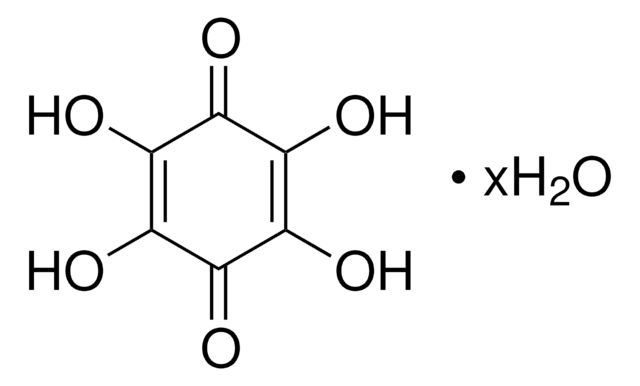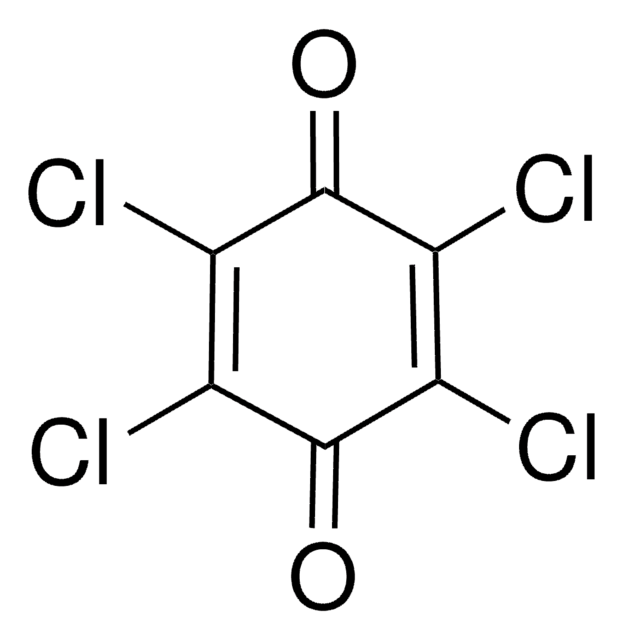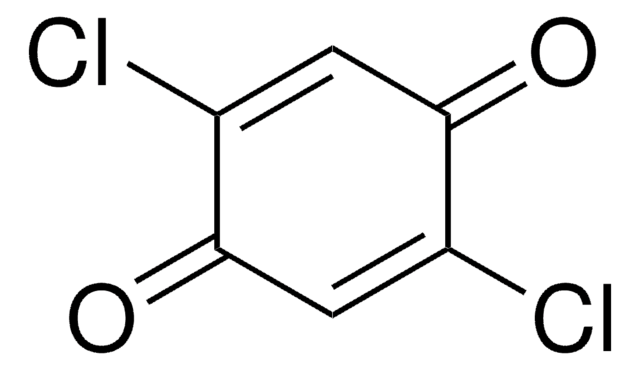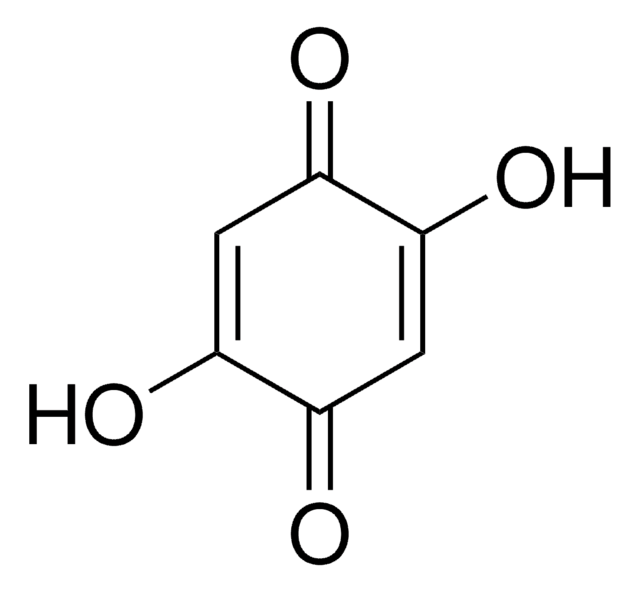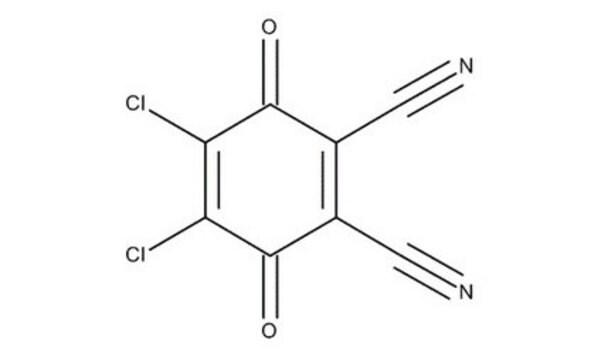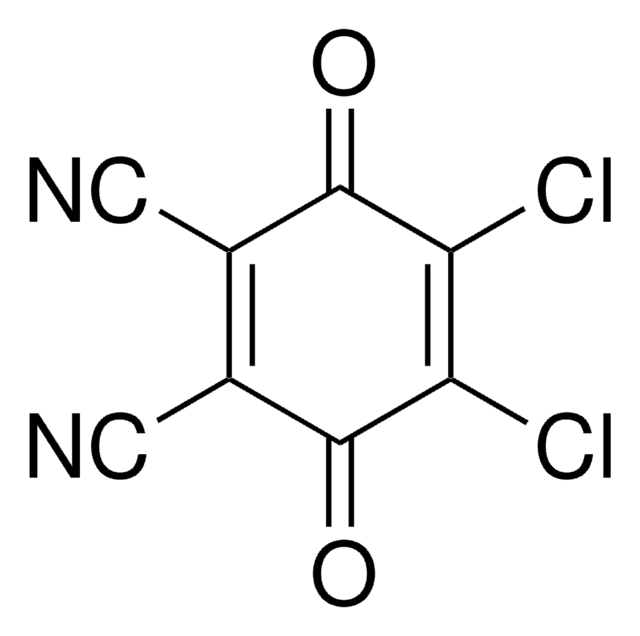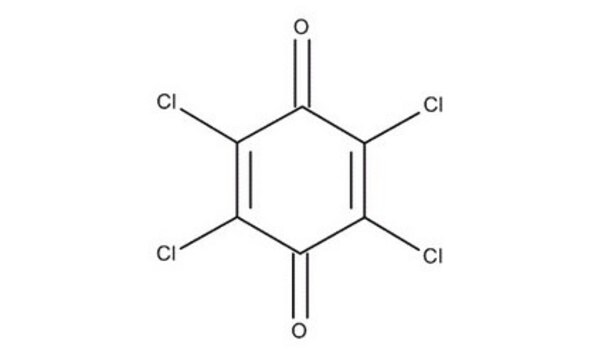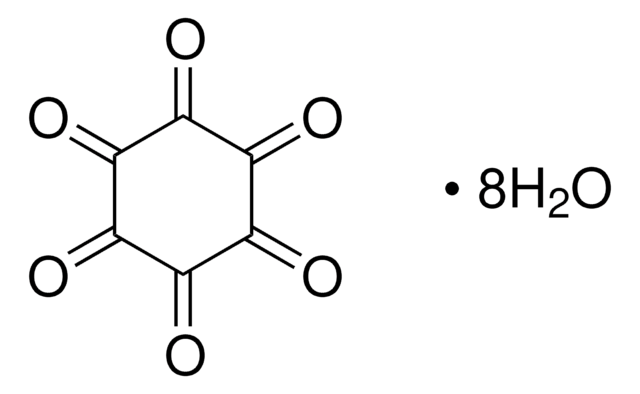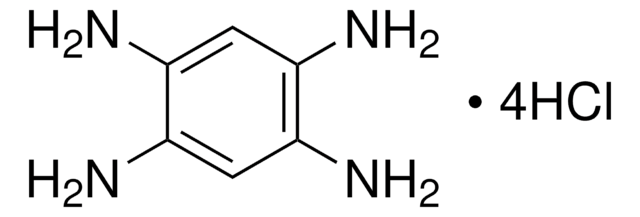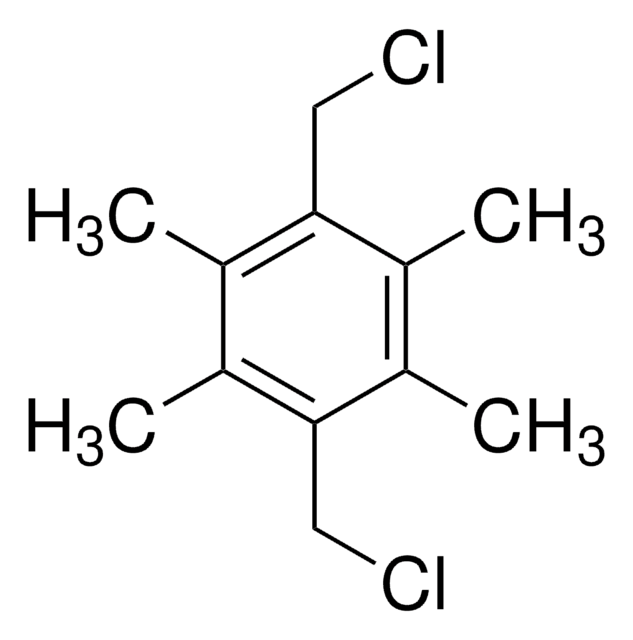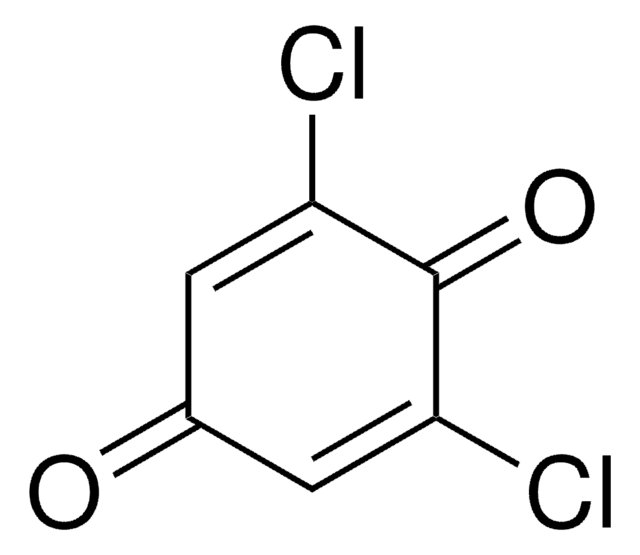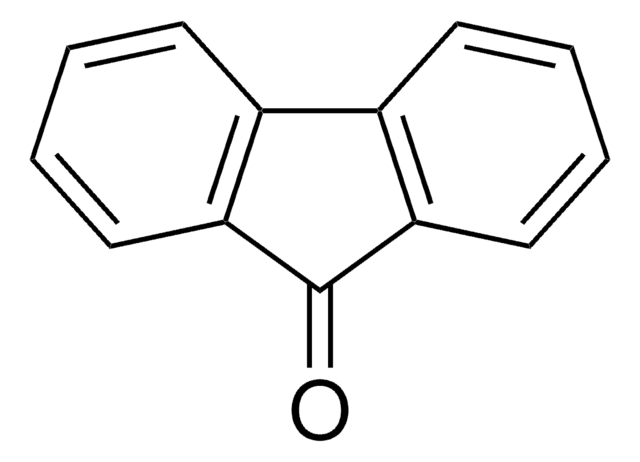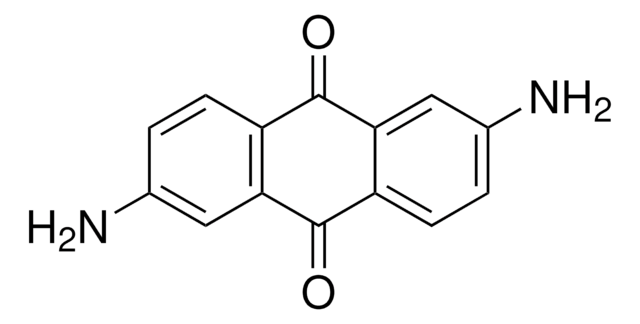C8136
Chloranilic acid
≥98%
Synonim(y):
2,5-Dichloro-3,6-dihydroxy-2,5-cyclohexadiene-1,4-dione, 2,5-Dichloro-3,6-dihydroxy-p-benzoquinone, NSC 6108, NSC 97383
About This Item
Polecane produkty
Poziom jakości
Próba
≥98%
Postać
powder
mp
≥300 °C (lit.)
ciąg SMILES
OC1=C(Cl)C(=O)C(O)=C(Cl)C1=O
InChI
1S/C6H2Cl2O4/c7-1-3(9)5(11)2(8)6(12)4(1)10/h9,12H
Klucz InChI
IPPWILKGXFOXHO-UHFFFAOYSA-N
Szukasz podobnych produktów? Odwiedź Przewodnik dotyczący porównywania produktów
Zastosowanie
- Acting as a proton donor in reactions studying dimensionality control
- Synthesis of dimethylbipyridyl complexes
- Synthesis of (nonylbenzimidazolylmethyl)benzene for preparation of neutral altitudinal rotor-shaped dirhenium metallacycles
- Charge-transfer reactions with metoprolol tartrate
- Salt formation with organic bases
- Synthesis of osmium metalla-rectangles with anticancer activity
Hasło ostrzegawcze
Warning
Zwroty wskazujące rodzaj zagrożenia
Zwroty wskazujące środki ostrożności
Klasyfikacja zagrożeń
Eye Irrit. 2 - Skin Irrit. 2 - STOT SE 3
Organy docelowe
Respiratory system
Kod klasy składowania
11 - Combustible Solids
Klasa zagrożenia wodnego (WGK)
WGK 3
Temperatura zapłonu (°F)
Not applicable
Temperatura zapłonu (°C)
Not applicable
Środki ochrony indywidualnej
dust mask type N95 (US), Eyeshields, Gloves
Certyfikaty analizy (CoA)
Poszukaj Certyfikaty analizy (CoA), wpisując numer partii/serii produktów. Numery serii i partii można znaleźć na etykiecie produktu po słowach „seria” lub „partia”.
Masz już ten produkt?
Dokumenty związane z niedawno zakupionymi produktami zostały zamieszczone w Bibliotece dokumentów.
Klienci oglądali również te produkty
Nasz zespół naukowców ma doświadczenie we wszystkich obszarach badań, w tym w naukach przyrodniczych, materiałoznawstwie, syntezie chemicznej, chromatografii, analityce i wielu innych dziedzinach.
Skontaktuj się z zespołem ds. pomocy technicznej